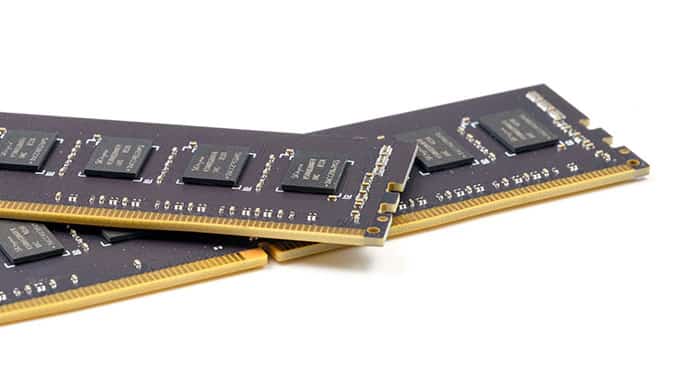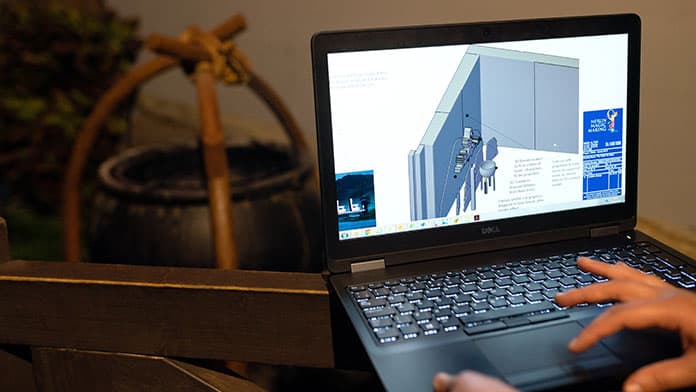Not sure whether to get a gaming laptop or mobile workstation?
It’s a tough decision to make, especially if you’re looking for a laptop that can play games and run engineering, simulation, or design software.
Both gaming laptops and mobile workstations are more powerful than ordinary laptops and can be easily carried to work or school.
However, their nearly identical features are what make it difficult for most people to decide between the two.
In this article, we are going to look at the differences between gaming laptops and mobile workstations, and this will help you choose the one that’s right for you.
What Is The Difference Between Gaming Laptops And Mobile Workstations?
Besides other things, the processor and graphics card are the main things that differentiate gaming laptops from mobile workstations.
Gaming laptops have Nvidia Geforce or AMD Radeon graphics cards which are optimized for gaming while mobile workstations have Nvidia Quadro or AMD RadeonPro graphics cards which have added computational power and VRAM to enable them to run GPU-oriented software better.
Also, while both can have consumer-grade performance processors, high-end mobile workstations will usually have commercial-grade processors such as Intel Xeon or AMD Ryzen Pro that you won’t find in gaming laptops.
Let’s take a deeper look into how mobile workstations differ from gaming laptops in terms of the following:
- Graphics card (GPU)
- Processor (CPU)
- RAM
- Application certifications
- Aesthetics
Gaming Laptop Vs Mobile Workstation Comparison Table
| Gaming laptop | Mobile Workstation | |
| Graphics Card (GPU) | Have Nvidia GeForce or AMD Radeon GPUs that are perfect for gaming and basic 3D Computer-Aided Design (CAD) and simulations | Come with Nvidia Quadro or AMD Radeon Pro GPUs that are built for computationally intensive tasks such as design software used by engineers and architects |
| Processor (CPU) | Have regular high-performance processors | Can have either high-performance processors or server-grade Intel Xeon or AMD Ryzen Pro processors that are optimized for parallel processing and support ECC memory |
| Memory (RAM) | Come with standard RAM found in regular laptops | High-end mobile workstations will have ECC memory which is more stable and capable of detecting and correcting soft memory errors |
| Certifications | They are not certified for any applications. This makes it hard to get support and drivers | Will usually have drivers and certifications for applications such as AutoCAD, SolidWorks, and CATIA |
| Aesthetics | Usually, they’ll have eye-catching logos, colored panels, and flashy LEDs that appeal to gamers | Their design is kept simple and clean to fit in well with professional work environments |
| PRODUCT RECOMMENDATION: MOBILE WORKSTATION |
|---|
 |
| Lenovo ThinkPad P17 Mobile Workstation |
|
| PRODUCT RECOMMENDATION: GAMING LAPTOP |
|---|
 |
| Acer Nitro 5 AN515-55-53E5 Gaming Laptop |
|
1. Graphics Card (GPU)

Both mobile workstations and gaming laptops have dedicated graphics cards. The difference is that GPUs in gaming laptops are designed for ‘consuming’ graphics while those of mobile workstations are designed for creating graphics.
Even though Nvidia GeForce and AMD Radeon GPUs found in gaming laptops can do basic 3D Computer-Aided Design (CAD) and simulations, they are not specifically designed for gaming. For this reason, they lack special drivers and error correction technology found in creator graphics cards.
Mobile workstations are equipped with either Nvidia Quadro or AMD RadeonPro graphics cards that are designed for computationally intensive tasks such as 3D modeling, computer animation, video editing, and data analysis.
Generally, workstation GPUs also have higher clock speeds, more Video Random Access Memory (VRAM), special drivers, and error correction technology. This allows them to calculate, draw, and render at high speed and with high accuracy.
Special drivers allow workstation laptops to run certain production applications such as SolidWorks, AutoCAD, and ArcGIS smoothly out of the box. Due to these extra features, they are more expensive than consumer-grade GPUs.
2. Processor (CPU)
The same high-performance CPUs can be found in both mobile workstations and gaming laptops. But when it comes to high-end workstations, you will often find server-grade processors such as Intel Xeon or AMD Ryzen Pro processors.
Intel Xeon processors differ from ordinary intel i-series processors in that they have more cores, support Error-Correcting Code (ECC) memory, and hyperthreading. Hyperthreading is a technology that helps you create virtual cores when you need them.
AMD Ryzen Pro processors for mobile workstations have a built-in security feature powered by AMDGuardMI technology that defends your computer from any threats, thus keeping data secure.
In general, workstation processors are more optimized for parallel processing rather than gaming. This helps programs run faster and reduces the amount of time needed to complete tasks.
Commercial-grade processors in workstation laptops are perfect for computational analysis, complex image rendering, and processing of sensitive data where random errors and security breaches can create problems.
In addition, workstation processors are built with reliability in mind, meaning that they can operate for long hours without crashing.
If your priority is gaming, you’ll do just fine with ordinary high-performance processors such as Intel core i5, i7, or i9 since game developers create their codes to utilize 4-6 cores. For gaming, you also don’t need ECC memory and hyperthreading technology.
3. RAM

All gaming laptops come with standard RAM but the same cannot be said for all workstations. Workstation laptops with Intel Xeon processors support ECC memory.
ECC memory gives you more stability over regular RAM because it is capable of detecting and correcting soft memory errors before they corrupt data or cause system crashes.
However, memory errors are quite rare in modern memory chips. So, unless you are planning to use your laptop as a server or for scientific or financial computing, you don’t need ECC memory.
You won’t find ECC memory in gaming laptops since they don’t come with server-grade CPUs. Furthermore, ECC memory is more expensive and around 2-3% slower than standard RAM which does not benefit gaming.
4. Application Certifications

Some mobile workstations such as Dell Precision and Lenovo P series have an advantage over gaming laptops because they are certified for certain applications. You also benefit from drivers that are designed to improve the performance of GPU-heavy applications.
Certification means that an Independent Software Vendor (ISV) has tested the computer hardware and confirmed that both hardware and software are compatible. They also ensure that dependable support can be provided in case you encounter any problems while running applications.
For instance, Lenovo’s ThinkPad P1 workstation is certified for use with Creo, SolidWorks, Inventor, AutoCAD, CATIA, PDMS, Microstation, NX, Vectorworks, Solid Edge, ArcGIS, and Revit.
Gaming laptops, on the other hand, do not provide certifications that guarantee you’ll get support or that creator applications will run smoothly and reliably for the best user experience.
5. Aesthetics (Look and Feel)

Gaming laptops from brands such as Asus ROG, Gigabyte, MSI, and Razer are usually designed to appeal to gamers. Therefore, they sometimes have chassis designs with striking colors, eye-catching logos, large exhaust vents, and flashy LED lights along their panels.
They also feature programmable RGB backlit keyboards that allow gamers to assign specific colors to navigational keys.
For example, you can choose to assign a different color to the W, A, S, and D keys to make them stand out from the rest of the keys because, in most games, they are used to move game characters/objects around.
Mobile workstations, on the other hand, are designed for use in a professional business environment. Their chassis design is kept plain and clean. Even those with backlit keyboards come with single-color LEDs that are not flashy.
Workstation Laptops And Gaming
Mobile workstations can be used for gaming as long as they have a high-end AMD RadeonPro or Nvidia Quadro graphics card that can match the performance of AMD Radeon or Nvidia Geforce Graphics cards found in gaming laptops.
However, if your main goal is to play games, there is no need to get a mobile workstation since it is primarily designed to run graphics-intensive applications for creators rather than gaming.
But if you intend to play games as well as use your laptop for professional tasks such as 3D modeling, animation, video editing, and CAD, a mobile workstation will work for you.
Mobile Workstation Vs Gaming Laptop For Video Editing
Both gaming laptops and mobile workstations can be used for video editing. However, since video editing programs such as Adobe After Effects recommend the use of certified GPUs and CPUs, it is better to invest in a workstation laptop because you will be guaranteed support and resources to keep you running.
Final Thoughts
Gaming laptops are designed with gamers in mind and are a perfect choice for those whose primary focus is gaming. On the other hand, if your priority is being able to run GPU-intensive applications such as AutoCAD, Autodesk Maya, Blender, etc, then a mobile workstation will serve you best.
Mobile workstations are perfect for engineering, architecture, and design professionals and students.
Keep in mind that both have extra features such as ECC memory, certifications, data protection, and RGB backlit keyboards, that may or may not benefit you depending on what you want to achieve.
Therefore, if you are on a budget, you want to avoid spending money on the extra features you don’t need.
